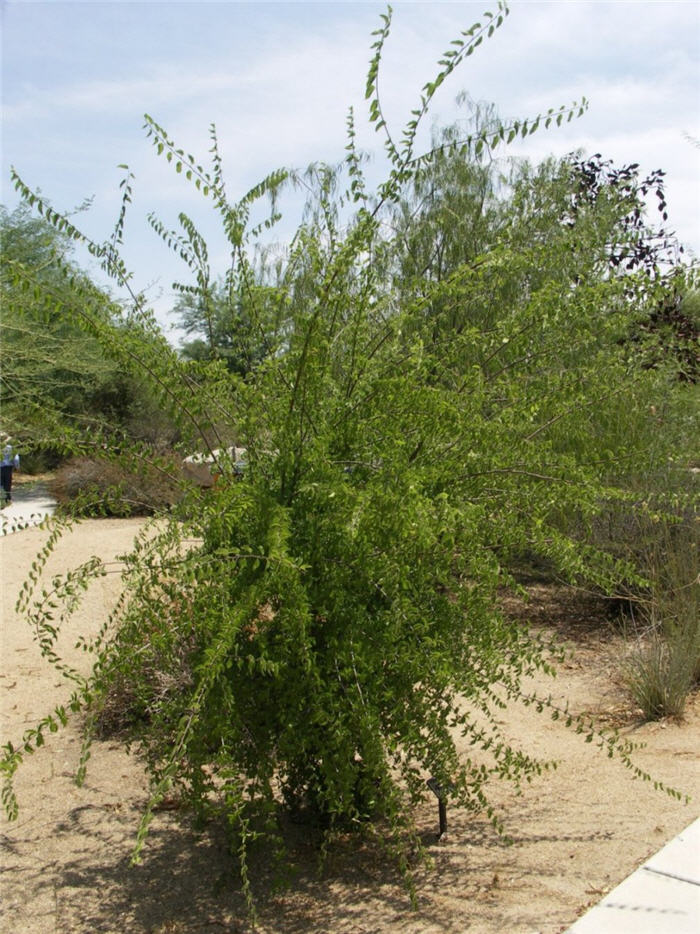| Botanical Name: Celtis reticulata | |
| Common Name: Netleaf Hackberry |

-
Anatomy
-
Culture
-
Design
Plant Type
Tree, Shrub
Height Range
12-25', 25-40'
Flower Color
Green
Flower Season
Spring
Leaf Color
Green
Bark Color
Brown, Grey
Fruit Color
Orange
Fruit Season
Summer, Fall
Sun
Full, Half
Water
Low
Growth Rate
Moderate, Slow
Soil Type
Sandy, Clay, Loam, Rocky, Unparticular
Soil Condition
Average, Rich, Poor, Well-drained, Dry
Soil pH
Neutral, Basic
Adverse Factors
n/a
Design Styles
Meadow, Mediterranean, Ranch, Spanish, Native Garden
Accenting Features
Fall Color, Multi-trunk Tree, Unusual Shape
Seasonal Interest
Winter, Fall
Location Uses
Background, Shrub Border, Walls / Fences
Special Uses
Hedge, Screen, Mass Planting
Attracts Wildlife
Birds, Butterflies
Information by: Stephanie Duer
Photographer: Mountain States Nursery
Photographer: Mountain States Nursery
-
Description
-
Notes
Netleaf hackberry is a small deciduous tree with shrubby tendencies. It is related to Common Hackberry. Leaves are dark green and leathery, and turn yellow in the fall. Flowers are inconspicuous, and are followed by little orange berry-like drupes that ripen in the fall, loved by birds. Bark is rough with prominent ridges, and is red-brown to grey. Grows between 20 to 30 feet tall and 15 to 20 feet wide. Its shrubby inclinations make it best suited as a background shrub; it does have a knotty, gnarly structure that provides winter interest. A Utah native.
Grow in full sun to part shade in well drained soils with moderate organic content. Is very drought tolerant once established. Will grow in gravelly to rocky soils, and is tolerant of alkaline soils to 7.5pH. It can be trained to a central leader and be made to be more tree-like, but it requires alot of attention to keep it so; best to work with its natural shrubby nature and let it serve as a backdrop in a shrub border. Frost tolerant to 0 F. Also listed as Celtis laevigata var. reticulate.